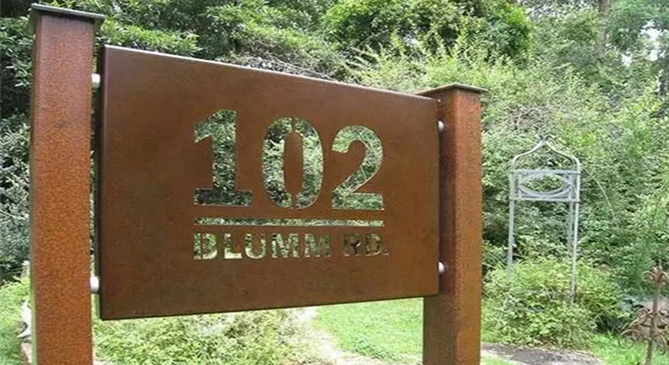
 Weathering steel, also known as corrosion-resistant steel
Weathering steel, also known as corrosion-resistant steel, originated from corten steel in North America. It is a low alloy steel series between ordinary steel and stainless steel. Weathering steel is made of ordinary carbon steel with a small amount of copper, nickel and other corrosion-resistant elements. It has the characteristics of high quality steel, such as tenacity, plasticity, forming, welding and cutting, corrosion, high temperature, anti fatigue, etc.
The corrosion of weathering steel in natural climate makes the steel material form a dense oxide layer between the rust layer and the substrate. Due to the existence of this dense oxide film, oxygen and water in the atmosphere are prevented from infiltrating into the steel matrix, thus improving the atmospheric corrosion resistance.
Ordinary steel will gradually corrode and age until it is damaged after rusting, and the appearance of weathering steel makes designers have the opportunity to make full use of the corrosion form of steel to express in the plastic art creation.
As early as the beginning of the 20th century, some avant-garde foreign artists used steel for sculpture creation. Because steel corrosion is a natural state of the material itself, which is very consistent with the authenticity principle of artistic expression, steel has become one of the materials of modern landscape plastic art design over time.
Weathering steel has outstanding visual expression. The color brightness and saturation of rusted steel plate are higher than that of general building materials, so it is easy to highlight in the background of garden plants. In addition, the rough surface caused by steel plate corrosion makes its structure more volume and quality.
Weathering steel has a strong ability to shape. Like other metal materials, rusted steel plates are easier to shape into rich and varied shapes and maintain excellent integrity, which is hard to achieve for wood, stone and concrete. The color of rusted steel plate is greatly affected by the environment and climate. It is easy to change from bright red brown to dark blue gray after being placed for a long time. With the aging of time, the unique color and texture of aesthetic weathering steel can reflect the unique artistic charm. It can trace the historical sense of the site, record the instantaneous sense of time, and extend the vitality of the site, so that the limited materials can "coexist" with each other, reflecting the sustainable design concept.

 Weathering steel, also known as corrosion-resistant steel, originated from corten steel in North America. It is a low alloy steel series between ordinary steel and stainless steel. Weathering steel is made of ordinary carbon steel with a small amount of copper, nickel and other corrosion-resistant elements. It has the characteristics of high quality steel, such as tenacity, plasticity, forming, welding and cutting, corrosion, high temperature, anti fatigue, etc.
Weathering steel, also known as corrosion-resistant steel, originated from corten steel in North America. It is a low alloy steel series between ordinary steel and stainless steel. Weathering steel is made of ordinary carbon steel with a small amount of copper, nickel and other corrosion-resistant elements. It has the characteristics of high quality steel, such as tenacity, plasticity, forming, welding and cutting, corrosion, high temperature, anti fatigue, etc.